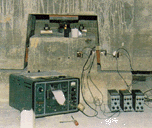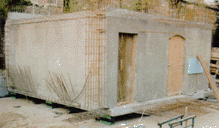Vibration
Base Isolation
The dynamic performance of Base Isolated buildings have not been broadly investigated or reported to allow a clear judgement to be made about the value of this technique as a means of vibration control, except by a few researchers. The limited research shows that benefits of Base Isolation are not in line with common predictions made using SDOF models, which are fundamentally inappropriate. Base Isolation performance should be judged against what might have arisen had traditional foundations been used. This is not practical to determine on site, in all but special circumstances, but may be examined theoretically.
Free-field measurements on a site are subject to change resulting from interaction with unloaded foundations. The response of this foundation is further modified by the presence of the superstructure and depends upon the nature of its coupling, which may be traditionally or isolator coupled.
Base Isolated buildings may lose some of the advantages enjoyed by an un-isolated building. Traditionally coupled foundations allow motion of some modes of the structure to include a participating soil mass which increases inertia for these modes, and would also allow energy to radiate back into the soil. A Base Isolated building is decoupled from the soil by the isolators. The lower support stiffness of the isolators makes the building more susceptible to wind induced motion. Ambient levels of vibration in a Base Isolated building, due to building services plant, are sometimes found to be higher than would arise in a traditionally founded structure. The picture shows the pile cap of an isolated building under testing.

Structural resonances can negate the potential performance of a Base Isolation system. Buildings will have many modes of vibration, some involve the foundations and others are localised, independent of foundation coupling. A large structure is likely to have a higher modal density than a small discrete structure, which in the theoretical limit approaches a simple SDOF. A high modal density of relevant modes in the dominant frequency range of the ground vibration spectrum could compromise the potential effectiveness of Base Isolation.

The calculation of benefit / disbenefit depends upon the datum situation referred to, and is therefore a relative rather than absolute measure. Base Isolation may prove to be effective at reducing groundborne noise, and would tend to be effective to a lesser extent in attenuating perceptible vibration. Attenuation would tend to increase for a lower rigid body mount frequency and damping. Performance is direction dependent, tending to be more effective in the horizontal direction. The pictures show a test room on coil springs constructed to test the validity of the isolation model, and a finite element model of the test room.

Base Isolation should not however be viewed as a conservative solution, in that it will always improve the situation, since research shows that Base Isolation in certain circumstances may be detrimental to the dynamic response of the building [8]. It is therefore necessary to weigh up the advantages and disadvantages and thereby justify a decision to Base Isolate, as there are a variety of alternative control measures that may prove more effective and/or be more economical.

